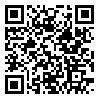مجله رویش روانشناسی از دادن گواهیهای کاغذی معذور است. لطفا تقاضا نکنید. همه گواهی ها در صفحه شخصی کاربران موجود است.
year 14, Issue 5 (Summer 2025 2025)
Rooyesh 2025, 14(5): 129-140 |
Back to browse issues page
Download citation:
BibTeX | RIS | EndNote | Medlars | ProCite | Reference Manager | RefWorks
Send citation to:



BibTeX | RIS | EndNote | Medlars | ProCite | Reference Manager | RefWorks
Send citation to:
Samami M, Sheybani H, Taher M. (2025). Comparing the effectiveness of rational-emotive therapy and acceptance and commitment therapy on cognitive flexibility in adolescents with disruptive mood dysregulation disorder. Rooyesh. 14(5), 129-140.
URL: http://frooyesh.ir/article-1-6118-en.html
URL: http://frooyesh.ir/article-1-6118-en.html
1- Ph.D. student in Psychology, Shahrood Branch, Islamic Azad University, Shahrood, Iran.
2- Assistant Professor, Department of psychology, Payame Noor university, Tehran, Iran. ,Hosein.sheybani@pnu.ac.ir
3- Associate Professor, Department of Psychology, Shahrood Branch, Islamic Azad University, Shahrood, Iran.
2- Assistant Professor, Department of psychology, Payame Noor university, Tehran, Iran. ,
3- Associate Professor, Department of Psychology, Shahrood Branch, Islamic Azad University, Shahrood, Iran.
Abstract: (435 Views)
The present study aimed to compare the effectiveness of rational-emotive therapy and acceptance and commitment therapy on cognitive flexibility in adolescents with disruptive mood dysregulation disorder. The present study method was a semi-experimental design with a pre-test-post-test design and a control group with a follow-up period (2 months). The statistical population of the present study consisted of all female students with disruptive mood in the first high school of Quds in the academic year 2022-2023. Of which 48 people were selected purposefully and randomly assigned to two experimental groups and a control group. The instrument of this study was the cognitive flexibility questionnaire of Dennis & Vander Wal (CFI, 2010). The intervention of rational-emotional therapy and acceptance and commitment therapy was implemented in 8 90-minute sessions once a week in a group for the first and second experimental groups. The data were analyzed using mixed variance analysis. The results of the Warbans analysis showed that there was a significant difference between the groups in post-test and follow-up cognitive flexibility (P<0.05), and the results showed that acceptance and commitment therapy was significantly more effective than rational emotive therapy on the cognitive flexibility of adolescent girls with disruptive mood dysregulation disorder, and a significant difference was observed between the two treatments (P<0.05). It can be concluded that there is a significant difference between the two rational-emotive therapies and acceptance and commitment therapy.
Keywords: Cognitive Flexibility, Disruptive Mood Dysregulation Disorder, Rational-Emotive Therapy, Acceptance and Commitment Therapy.
Type of Article: Research |
Subject:
General Psychology
Received: 2025/03/16 | Accepted: 2025/04/4 | ePublished: 2025/08/1
Received: 2025/03/16 | Accepted: 2025/04/4 | ePublished: 2025/08/1
Send email to the article author
| Rights and permissions | |
 |
This work is licensed under a Creative Commons Attribution-NonCommercial 4.0 International License. |





